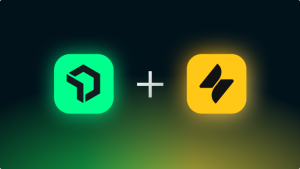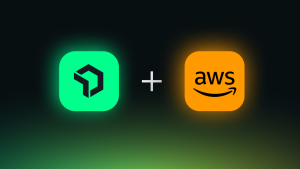In today's fast-paced digital landscape, maintaining optimal viewer experiences and ensuring seamless backend operations are crucial for media and entertainment businesses. Each week, Americans stream over 169 billion minutes of video content. Yet, when every millisecond counts during a live event, and when every dropped advertising slot is lost revenue, it’s critical to have a complete, real-time view of the whole streaming architecture.
That’s why New Relic has partnered with Mux to offer enhanced observability across the entire customer video experience. A unified measurement approach unlocks simultaneous client-side and backend observability, and facilitates faster resolution through streamlined root cause analysis. With the Mux and New Relic integration, businesses gain access to a comprehensive monitoring solution that covers the entire streaming workflow.
Full video experience observability
The Mux and New Relic integration is available at no additional cost for all New Relic users. By combining video analytics from Mux with full-stack observability from New Relic, it’s now possible to:
- Proactively improve service quality with alerts on signals like viewer count changes and playback failures correlated with client-side signals like crashes and error rates.
- Analyze user sessions in full detail, seeing the complex interactions between the video player, content delivery network (CDN), client app, and backend services.
- Monitor performance across devices with a rich, combined data set of video analytics and data from web-based environments, mobile, smart TVs, and Roku to unlock new insights about app and customer behavior.
One of the primary challenges in troubleshooting technical issues in video workflows is the time-consuming task of reviewing multiple data sets across tools. By bringing the Mux and New Relic data sets together, engineering and operations teams are enabled to prioritize the activities that have an immediate impact on experience and keep viewers engaged, instead of wasting time switching between tools.
This integration provides a complete view of the technology ecosystem, including devices, players, transcoders, origin servers, CDNs, and more. This enables users to identify potential system failures and bottlenecks along the entire delivery chain. By correlating backend technical issues with fluctuations in viewer experience metrics, root cause detection and troubleshooting cycles are expedited, empowering teams to maintain a high quality of experience (QoE), ultimately leading to increased viewer engagement and revenue generation.
How to get started
Getting started is simple. We’ve created a CloudFormation template that automates most of the setup and configuration so you can get up and running in a few minutes.
First, open the Mux Dashboard and visit the Streaming Exports configuration in the Settings page. This functionality is available to customers on the Mux Data Media tier. Then, create a New Streaming Export, with the following selections:
- Under Export Data, select Video Views.
- Under Export Format, select JSON.
- Under Service, send data to Amazon Kinesis Data Streams.
Next, copy the External ID from the configuration form.
You’ll use CloudFormation to automate much of the AWS configuration. First, download the CloudFormation from the Mux template library. Then, in the AWS console, open the CloudFormation console. Select Create stack and then choose With new resources (standard).
In the Create stack page, complete the following:
- Under Prepare template, select Template is ready.
- Under Specify template, select Upload a template file.
- Upload the CloudFormation template you downloaded from the Mux Template library.
- Enter a stack name and click through the prompts to create the AWS resources that will ingest video views from Mux and send them to New Relic.
When the stack is available, there will be two output values. Select the Outputs tab. Copy the Kinesis ARN and Role ARN values into the Mux Dashboard Streaming Export configuration.
Visualize your data
Load a video player with Mux Data configured for this environment and the completed views will be reflected in the Mux Dashboard, and will also be sent to New Relic. The view logs will appear in New Relic log management. You can find detailed information on field and value definitions in the Mux Data documentation.
Install the Mux Video Analytics quickstart to get the free pre-built dashboard.
You can also get a curated visualization of your streaming video analytics. To get the free dashboard, complete the following:
- Go the the Mux Video Analytics quickstart in New Relic Instant Observability.
- Select Install Now. Note that if you don’t have a New Relic account yet, it will guide you to sign up for a free account.
- In the quickstart installation plan, because you have instrumented Mux, select Done. It will automatically deploy the quickstart dashboard.
- Select See your data to get to the view.
Conclusion
In the era of digital transformation, maintaining exceptional viewer experiences and ensuring smooth backend operations are vital for businesses to stay ahead. The strategic partnership between Mux and New Relic offers customers a comprehensive observability solution, enabling technical teams to proactively monitor their entire video delivery ecosystem and swiftly diagnose and resolve issues. Through enhanced visibility, streamlined root cause analysis, and a unified measurement approach, Mux and New Relic empower businesses to deliver optimal performance, foster viewer engagement, and drive revenue generation. With this powerful solution, organizations can embrace the future of observability and thrive in the ever-evolving digital landscape.
Next steps
Get started with video experience observability by installing the Mux Video Analytics quickstart.
If you’d like to talk directly with Mux and New Relic solutions teams contact us today.
The views expressed on this blog are those of the author and do not necessarily reflect the views of New Relic. Any solutions offered by the author are environment-specific and not part of the commercial solutions or support offered by New Relic. Please join us exclusively at the Explorers Hub (discuss.newrelic.com) for questions and support related to this blog post. This blog may contain links to content on third-party sites. By providing such links, New Relic does not adopt, guarantee, approve or endorse the information, views or products available on such sites.




